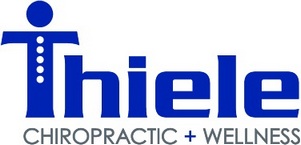Low back pain is one of the most common condition in this country and the world. Back pain affects 8 out of 10 people at some point during their lives (1). 27.5% of adults have had low back pain in the last 3 months (2). Back pain can last anywhere from a few days to weeks. The total direct costs of chronic low-back pain-related health care utilization are estimated to be $96 million a year (3) (this number does not take into account the indirect cost of low back pain). These statistics should impress upon you not only the prevalence and cost associated with low back pain, but also the importance of proper treatment.
Low back pain can start due to injuries (sports, work, auto accidents, etc.), repetitive stress/movement, or wear and tear (arthritis and degeneration). The pain may be due to various structures being injured: muscles and ligaments (strains/sprains), disc injury/damage, joint injury/arthritis, and more rarely organ system dysfunction (eg. kidney stones). Often times low back pain can also be associated with sharp, shooting pains (or numbness and tingling) into the legs that may go all the way to the feet. This pain is referred to as sciatica. Sciatica symptoms are often the result of significant injury and inflammation (or impingement) to the nerves that exit the spine at the low back.
Low back pain can be treated numerous ways by various professionals. Treatments can range from doing nothing (bed rest), conservative management, over the counter medications, prescription medications, to surgery. Ignoring pain or masking the symptoms may provide some relief but will never help heal the problem area. Care should be sought to locate the cause of low back pain, correct the cause, and then prevent it from recurring. Logically care should start conservatively and progress to more invasive procedures (if needed). Conservative care consists of Chiropractic, Massage, Acupuncture, and/or Physical Therapy. If these treatments do not resolve the issues then more invasive procedures can be considered including medications, injections, or surgeries (all of which have inherently greater risks than conservative management).
Chiropractic care focuses on the joints of the body (primarily the spine and pelvis) moving through their proper range of motion so they are less likely to be injured or cause low back pain. When an injury to the spine occurs and joint motion is inhibited it often leads to increased inflammation. This inflammation can cause the nerves that exit the spine to be hypersensitive creating pain, spasms, numbness and tingling, burning, sharp or shooting pains, etc. Restoring the proper motion to these spinal joints decreases the inflammation and allows the injured area to heal more appropriately.
“Patients with chronic low-back pain treated by chiropractors showed greater improvement and satisfaction at one month than patients treated by family physicians. Satisfaction scores were higher for chiropractic patients. A higher proportion of chiropractic patients (56 percent vs. 13 percent) reported that their low-back pain was better or much better, whereas nearly one-third of medical patients reported their low-back pain was worse or much worse.”
– Nyiendo et al (2000), Journal of Manipulative and Physiological Therapeutics
Here at Thiele Chiropractic & Wellness we are not only good at detecting and correcting the injured areas but we also go the extra mile to teach our patients how to stabilize and strengthen their core muscles to help prevent a recurrence of low back pain. Our spinal rehabilitation exercises create a strong and stable spine that is more resilient to stressors and less likely to be re-injured.
“An ounce of prevention is worth a pound of cure.” -Benjamin Franklin
If you have low back pain or have had episodes of pain please give us a call so we can help you get out of pain and get back to enjoying life.
- Medline Plus. Back Pain. http://www.nlm.nih.gov/medlineplus/backpain.html. Accessed March 11, 2013.
- table 48 http://www.cdc.gov/nchs/data/hus/hus13.pdf
- Mehra M, Hill K, Nicholl D, Schadrack J. “The burden of chronic low back pain with and without a neuropathic component: a healthcare resource use and cost analysis.” J Med Econ. 2012;15(2):245-52
